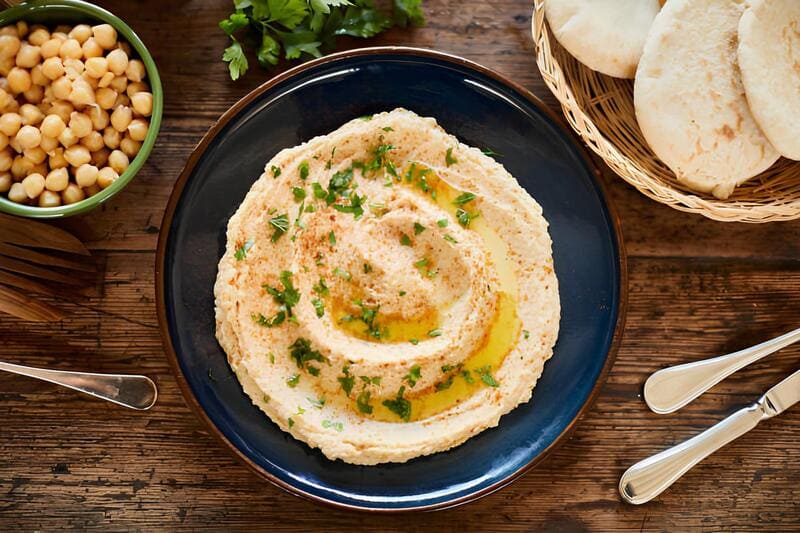
A staple of Middle Eastern and Mediterranean cuisines, hummus offers a creamy and delightful balance of garlicky, lemony, and smoky flavors. Traditionally made with tahini, this Egyptian version without tahini remains deliciously rich while being low calorie and healthy. It’s perfect for those who prefer a lighter, yet equally satisfying, dip.
The simplicity of this recipe, combined with its nutritional benefits, makes it an excellent homemade option for a quick snack or a savory side dish. Rich in protein and fiber from the chickpeas, this easy hummus version is sure to become a staple in your kitchen. Pair it with fresh veggies or pita bread for a genuinely delightful Moroccan twist.
Ingredients
- 1 can (15 oz) chickpeas, drained and rinsed
- 2 cloves garlic, minced
- 3 tablespoons olive oil
- 2 tablespoons fresh lemon juice
- 1/2 teaspoon ground cumin
- Salt to taste
- 2-3 tablespoons water
- Paprika and fresh parsley for garnish (optional)
Preparation
- Combine chickpeas, minced garlic, olive oil, lemon juice, ground cumin, and salt in a food processor.
- Blend until the mixture is smooth. Gradually add water, one tablespoon at a time, until the desired consistency is achieved.
- Taste and adjust seasoning, adding more salt or lemon juice if needed.
- Transfer hummus to a serving dish.
- Garnish with a drizzle of olive oil, a sprinkle of paprika, and chopped fresh parsley, if using.
- Serve with warm pita bread, fresh vegetables, or as desired.
Did you know?
Hummus, a word derived from Arabic meaning “chickpeas,” is embraced by many cultures and is often served as part of mezze — an assortment of small dishes shared among diners. Chickpeas, the primary ingredient, are an excellent source of plant-based protein, iron, and dietary fiber, making hummus not only delicious but also nutritionally rich.
This recipe variation, which omits tahini, is perfect for those with sesame allergies or those looking to make an even lighter version of the classic dip. The absence of tahini doesn’t compromise the authentic taste; the olive oil and lemon juice keep the hummus creamy and tangy. Interestingly, hummus has become an international star.
From historical finds in ancient Egypt to modern-day appetizers in Western restaurants, its popularity lies in its easy, adaptable nature and the fact that it’s a healthy, low calorie snack. Whether enjoyed in Egypt, where it’s a common side dish, or Morocco, where flavors tend to incorporate spicier notes, hummus continues to unite diverse culinary traditions through its timeless appeal.
